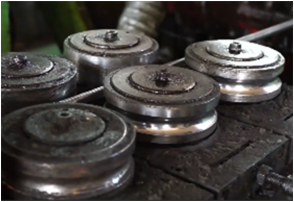Шіл . 31, 2024 22:36 Back to list
Understanding Hex Nut Wrench Sizes for Optimal Fastener Solutions and Efficient Tools Selection
Understanding Hex Nut Wrench Sizes
When it comes to working with fasteners, particularly nuts and bolts, having the right tools is crucial. Among the most commonly used tools in mechanical and construction tasks are hex nut wrenches. These specialized wrenches are designed to fit the hexagonal shapes of nuts, providing the grip and torque needed to tighten or loosen them effectively. Understanding the sizes available and how to choose the right one can significantly simplify any project, whether you're a professional mechanic or a DIY enthusiast.
What is a Hex Nut Wrench?
A hex nut wrench, often referred to as a hex wrench or Allen key, is a tool that fits into the hexagonal recess of a bolt or nut. The design allows for efficient application of torque while minimizing the risk of stripping the fastener. These wrenches come in various shapes, including L-shaped, T-shaped, and ball-end configurations. The ball-end wrenches offer a unique advantage, allowing you to engage the fastener from an angle, which can be particularly useful in tight spaces.
Measuring Hex Nut Wrench Sizes
Hex nut wrenches come in both metric and imperial sizes, making it essential to understand the measurements that correspond to your hardware. Metric sizes are generally represented in millimeters (mm), while imperial sizes are indicated in inches. For instance, a common metric size might be 4mm, 5mm, or 6mm, whereas imperial sizes might include 1/8”, 3/16”, or 1/4”.
To accurately measure the size of a hex nut wrench needed for a particular fastener, it is helpful to use a caliper or a gauge
. The fitting should be snug, allowing for proper torque application without slippage.Common Sizes and Their Applications
hex nut wrench sizes

While there is a wide array of sizes available, certain ones tend to be more common due to their widespread application in manufacturing and construction.
- Standard Sizes Typical sizes may include 1/8”, 3/16”, and 1/4” in imperial, or 4mm, 5mm, and 6mm in metric. - Specialty Sizes Larger sizes, like 10mm or 12mm, as well as smaller ones like 2mm, are often used for specific applications, such as assembling furniture, automotive repair, or machinery maintenance.
Each of these sizes serves different functions, and having a complete set can make it easier to tackle various tasks without the need to constantly adjust or switch tools.
Choosing the Right Wrench
When selecting hex nut wrenches, consider the materials they are made from. Steel wrenches are standard, but those made of chrome vanadium or chrome molybdenum steel offer added strength and durability. Additionally, look for features like ergonomic handles or anti-slip grips, especially if you'll be using the wrenches in high-torque situations.
Furthermore, consider purchasing a complete set of wrenches that includes both metric and imperial sizes. This approach can save you from the frustration of mismatching wrenches with fasteners and ensure that you're always prepared for any project.
Conclusion
In conclusion, understanding hex nut wrench sizes is vital for anyone involved in mechanical work, DIY projects, or construction. By knowing the appropriate sizes and selecting the right tools, you can ensure precision, efficiency, and safety in your tasks. Whether you're dealing with standard sizes or specific applications, having the right selection of hex wrenches on hand will make every job simpler and more achievable. Invest in a quality set, and you’ll find yourself well-equipped to tackle any fastening challenge that comes your way.


